
Senior Developer at a pharma/biotech company with 501-1,000 employees
Fast, quick, powerful rich data visualisations that can be shared across our institute. Best software I've ever used.
What is most valuable?
The ability to quickly connect to all of our datasources, whether its a Oracle or MySQL database, and excel sheet of a csv file and produce a rich interactive visualisation that can then be shared amongst everyone on site is fantastic. The ease of the interface makes it a joy to use.
How has it helped my organization?
Previously all reporting was very static. Each report would answer one specific question and if someone needed more information they would typically have to ask for another report to be made. Tableau allows us to create interactive reports with filtering, parameters and drill downs allowing the viewers to investigate their own data and find their own answers without having to go through a reporting team.
What needs improvement?
It would like to see autosaving, embedded fonts and other options to improve the ease of dashboard layout.
For how long have I used the solution?
I first started using Tableau in June 2011
Buyer's Guide
Tableau
June 2025
Learn what your peers think about Tableau. Get advice and tips from experienced pros sharing their opinions. Updated: June 2025.
860,592 professionals have used our research since 2012.
What was my experience with deployment of the solution?
None, the install seemed very straight forward and we successfully rolled out Tableau Server to all the users on site.
What do I think about the stability of the solution?
No
What do I think about the scalability of the solution?
No
How are customer service and support?
Customer Service: Superb on the very few occasions I have had to make use of it. I have had a timely response and my issues have been fixed.Technical Support: Again, I haven't had the need to use this very often but when I did it was excellent. The support forums and technical documentation is second to none.
Which solution did I use previously and why did I switch?
We used a combination of custom webpages written in perl and the Jaspersoft reporting webapp.
How was the initial setup?
After getting the requirements for Tableau server the actual set-up and deployment seemed to go very smoothly.
What about the implementation team?
We used The Information Lab to assist with some of the initial set-up. They were excellent and would recommend them to anyone.
What's my experience with pricing, setup cost, and licensing?
Unknown as I am a power user and not a site admin nor involved in anything to do with license costs.
Which other solutions did I evaluate?
We were introduced to Tableau by a collaborator and went on their recommendation as they had already looked at other vendors.
What other advice do I have?
Download the free demo, connect to some data and play with it. See for yourself how easy and quick it is to produce something that previously took you days to to. Look on public.tableausoftware.com to see what other people have made it with.
Disclosure: My company does not have a business relationship with this vendor other than being a customer.
BI Expert with 51-200 employees
BIME vs. Tableau Comparison
1.1 General
This document compares two BI tool players in the Big Data arena – Tableau (http://www.tableausoftware.com/) and BIME (http://www.bimeanalytics.com/).
1.2 Comparison: BIME vs. Tableau
|
Parameter |
BIME |
Tableau |
Details |
|
Visualization |
8 |
9 |
Many types of graphs and visualization objects |
|
Ad-Hoc |
9 |
9 |
In both tools, a Semantic Layer pane allows for quick data exploration and manipulation |
|
Canned Reports |
8 |
8 |
Both tools support the ability to crete and consume pre-built reports with minimal time and effort |
|
Dashboarding |
9 |
9 |
Both tools have powerful built-incapabilities for authoring, publishing and administering dashboards on the web server |
|
Analytics |
8 |
8 |
calculation engine using a large function library |
|
License costs |
3 |
6 |
BM – Monthly subscription model
|
|
Cloud offering |
9 |
6 |
BM – SaaS-based solution by nature TL – 1. "Tableau Public": TL server hosted in Tableau; 2. Customer server in EC2 instead of on-premise |
|
Ease-of-use / intuitiveness |
8 |
9 |
Intuitive visual analysis, drag & drop, no SQL needed |
|
Ease-of-implementation & maintenance |
9 |
9 |
Very quick setup, semi-automatic semantic layer creation: data-types recognition, dimensions and measures definition, no code, no SQL required |
|
SDK/API |
6 |
7 |
TL – JavaScript API for web apps authoring BM – new API to allow 3 rd party integration and OEM |
|
Israel-based support & PS |
3 |
9 |
BM – Limited IL presence |
|
Financial stability, market presence and track-record |
5 |
8 |
BM – 15 employees, 1 st release 2 years ago, Angel-funded; Large installed-base |
1.1 Summary
Significant strengths of Tableau:
- Financial stability, market presence and track-record (both WW and in IL)
- Tableau's license costs are not cheap, but seem cheaper than BIME's in the long-term
- Israel presence – support and professional services
Significant strengths of BIME:
- Cloud offering – BIME is a SaaS product, thus cloud-enabled top to bottom.
- While Tableau does have some capabilities in this domain, it's not a true cloud solution.
Significant strengths of both:
Visualization, user capabilities (Ad-Hoc, Analytics, etc.) and Ease-of-implementation.
Significant weaknesses of both:
API capabilities are quite limited and immature.
Note:
- It seems like an issue both vendors are aware of and are working on in their roadmaps.
- It is not the most important feature, unless you plan an embedded/OEM solution.
Performance –
Both tools have a native connector to almost every Big Data platform available on the market. While this does not ensure good performance, it does improve the chances of getting better performance than other tools, which do not have such a connector.
Disclosure: My company does not have a business relationship with this vendor other than being a customer.
Buyer's Guide
Tableau
June 2025
Learn what your peers think about Tableau. Get advice and tips from experienced pros sharing their opinions. Updated: June 2025.
860,592 professionals have used our research since 2012.
Business Applications Architect at a tech vendor with 51-200 employees
Tableau has enabled us to make some important business decisions about market potential and product development.
Pros:
- Tableau can be used to retrieve data from multidimensional relational databases, spreadsheets and from cloud databases.
- Simple to develop worksheets and dashboards.
Cons:
- Didn't come across any yet, but yet we are still trying out many features.
Deployment:
Deployment was very easy and went through the installation videos and documentation prior to installation.
The training documents that are available online are very detailed and interactive. The instructors were very clear and concise in their presentations and demos and it was very easy to understand.
Business Metrics:
We have implemented dashboards for web analytics and were able to analyze the international market potential for our future product line, and reorganized the key team players to implement the product, reducing costs by resource allocation and targeting key countries for launching the products.
We have also implemented financial metrics dashboards, and were able to restructure resources, discontinued under-performing products, and shifted focus towards potential future products to be developed and implemented. We saved resource and project costs from discontinuing some products and cutting operating costs to become more profitable.
Alternate Vendors:
We did consider Oracle OBIEE, but the cost and functionality we need for our business is adequate with Tableau.
Disclosure: My company does not have a business relationship with this vendor other than being a customer.
CEO with 51-200 employees
Places great emphasis on the ability to create visualizations without the need for any technical skills
Tableau is charting, graphing and data analysis with go-faster stripes. It has obvious appeal, with prolific amounts of eye-candy and a relatively easy to use interface. As with other products of this nature its utility is firmly anchored in visual exploration of data using every format imaginable. It is not a data mining tool or a text analytics tool, but sits in the traditional business intelligence camp, albeit with a rich visual interface. It is positioned as one of a new breed of BI tools designed to deliver pervasive BI capability throughout the organization, or at least to those who need such tools.

The entry level product is Tableau Public, available as a throttled down free version, or in a Premium version with fewer restrictions. It is primarily targeted at the creation of graphics for web sites and offers a ‘paint-by-numbers’ approach to the creation and publishing of such graphics. A rich set of formats are supported including bar and line charts, heat maps, bubble charts, geo maps and many others (you are spoiled for choice really). Graphics are updated automatically when the underlying data is modified and links can be made to other content on a web site. The Premium version supports larger data sets and the optional suppression of access to the underlying data set. There are numerous web services of this nature (Jolicharts for example), but Tableau Public is certainly one of the best free offerings.
Tableau Desktop supports the visualization of data on the desktop and connects to a bewildering array of data sources, either individually or in concert. The Tableau Data Engine sits on a PC and calls upon the relevant data sources when needed. It executes queries in-memory for speed and switches data in and out of memory automatically, although clearly some wisdom is needed when accessing live data sources.VizQL is Tableau’s Visual Query Language and is claimed to bypass the usual extraction, format, graphing process to build a direct link between data sources and visual representations.
Tableau Server supports browser based tools for data visualization and as such opens BI up to a very wide audience. It provides the very wide range of visualizations and dashboards supported by Tableau, and also make them available on portable devices (iPad and Android).
Tableau places great emphasis on the ability to create visualizations without the need for any technical skills (scripting). Provided Tableau always offers what you need this is fine, the moment you want something different this could be problematical. For this reason I think it is wiser to have both options – scripting free visualizations for run-of-the mill tasks, but scripting capability for more unusual needs. Other offerings are stronger in this respect.
Disclosure: My company does not have a business relationship with this vendor other than being a customer.
I have never used this product but it appears perfect for visualization of data. I got two questions: Is it user friendly? And, does it have a mobile version for use with portable devices? That might just be the motivation I need to study Tableau on my own.
Consultant at a tech consulting company with 51-200 employees
Qlikview vs Tableau? I have to choose and I’m not sure
Most users love Excel, non-users hate it. When it comes to data visualization, Excel is generally dispised, except by those that have to make dozens of charts every single day. I call this the Excel Stockolm Syndrome. These are the forsaken data visualization users that keep making 3D pies when they should know better by now. Tired and overwhelmed. Not in the mood the learn yet another tool just to make those elusive “effective charts”. If you link good visualization to a tool they have no access to, you can be sure that the whole message is lost.
Becoming a Data Visualization Anarchist
I think things can be changed from the inside, improving the way people use Excel. I write for Excel users because I’m one of them. That’s not going to change soon. But I love data visualization, not the tools that make it happen. I specially like interaction, multiple charts and making them available on the web. And I need to manage more data (not big data, just more data). Some things can’t be done in Excel or require too much effort.
The Portuguese poet Fernando Pessoa has a funny short story called The Anarchist Banker. The idea is that only a banker can be a true anarchist, because only a banker can be free from “social fictions”, specially money… In data visualization, this means getting the tools out of the way, by learning them or avoiding them.
I chose the learning path and I’m learning R now. I always wanted to make those scatterplot matrices. And I want to play with the ggplot2 package. A programming language is covered but R is not going to pay the bills.
Enter Tableau and Qlikview
I will not complicate matters by discussing how I chose Tableau and Qlikview and not Spotfire, for example. I just want to choose one. Qlikview vs Tableau. Comparison articles like this and this are very helpful, but a man is a man with his circumstances. Each starting point is different from everyone else. Let me tell you what I think I know about these tools in this early stage.
Tableau

I like Tableau, I have to admit it. I like the fact that you don’t have to fight stupid defaults in design and formatting, because I share the same data visualization principles.
I like its enthusiastic and knowledgeable community. Let me give you two simple examples. I spent a lot of time making this horizon chart in Excel, and Joe Mako quickly came up with a better version in Tableau.
Then I tried to be creative with the bamboo charts and Joe Mako strikes again, with a better implementation. I’m starting to get nervous… (kidding)
I know and respect many Tableau users, not because of Tableau but because I share the same views regarding data visualization.
Apparently, maps in Tableau are good enough, so that’s a good point.
And as a blogger, I want to make my work available to the web, and Tableau Public is a nice option (my population pyramid).
The Guardian often publishes Tableau visualizations. I’d like to try that with the local newspapers here.
On the other hand, we know how stubborn some datavis experts are. Is Tableau that stubborn? Can clear vision and the right principles become a straitjacket? I really hate straitjackets (“the idea of”, never actually tried one…)
In my country, Tableau is virtually unknown and I am not sure if I want to sell shoes in Africa.
Qlikview

I know even less about Qlikview. The first chart I see in its video is the pie chart above. Not exactly a shiny example of good data visualization principles.
Apparently there is a very active Qlikview community on Linkedin but not so much on Twitter. Probably this is meaningful.
I keep reading that Qlikview is better than Tableau when it comes to making dashboards, while you should explore the data with Tableau. It’s a good point in favor of Qlikview (that’s what I need now). Extensions and the market seem to be interesting too.
Qlikview has several business partners here. Actually, I was invited to work in some Qlikview projects in 2013 (obviously I have to learn the basics until then). They can pay a lot of bills.
Its not always about features
Not everything is black and white, not everything can be decided based on feature-by-feature comparison. Not everything is heart, not everything is reason. If I choose Tableau, my data visualization skills will improve a lot. Qlikview is harder to predict. I’m sure there are many users that dislike the pie above. If not, Qlikview can be more, hummm, challenging.
What I’m going to do
I mentioned those Qlikview projects, but I’ll try to remove them from the equation, at least for now.
I have a simple dashboard in Excel and I’d like to create Tableau and Qlikview versions. That’s probably one best ways to evaluate a tool, using my own work.
So, can you help me?
I’d love to learn from you. Can you answer questions like:
- How do they compare regarding maps? Is it simple to add your own maps?
- Is it true that it’s easier to make a a centrally designed dashboard in Qlikview, while Tableau has a more exploratory nature?
- How can I share a Qlikview chart in my blog?
And please don’t tell me I have to learn both…
Disclosure: My company does not have a business relationship with this vendor other than being a customer.
Thanks Jorge!
Director of Data Analytics at a transportation company with 10,001+ employees
A business can learn and adapt to it really quickly. Easy to bring in and train.
Can connect direct to transactional data. They really worked to provide data vizualization for the data to tell a story. This is their strong point. Their performance is good as long as your not bringing in multiple data sources that have complex joints. Really easy to use. A business can learn and adapt to it really quickly. Easy to bring in and train.
Disclosure: My company does not have a business relationship with this vendor other than being a customer.
Tableau is a BI tool that is perfect for small and medium enterprises that probably do not even have an IT department to handle their complex BI needs. With this tool, the businesses are good to go since the program is very easy to use and so learning it is also very simple. The fact that Tableau has an excellent performance and makes use of use of virtualization techniques is the reason it is very popular among businesses.
BI Expert with 1,001-5,000 employees
One major area where Tableau fell short for us is authentication
One major area where Tableau fell short for us is authentication. We would like LDAP (or Windows AD) SSO authentication to the server based Tableau product. We also want Tableau to handle authentication methods back to data sources like SQL Server or SAP BW other than a hardcoded ID/password. At this point I think the product falls a little short. Our workaround is dumping data to text files and then integrate in Tableau at that level. That extra step prevents us from looking at Tableau as an enterprise reporting/analytical tool. We have passed this info to Tableau support and are waiting to see how the product develops going forward.
Disclosure: My company does not have a business relationship with this vendor other than being a customer.
Kevin -- If a you or another leader at your manufacturing co. are willing to be interviewed for a story on your selection of rel. 8.3.2 Tableau software, email me at dring@techtarget.com, where I work as a news writer. Also, interesting comment on your selection by H. Emre.
Developer at a tech consulting company with 51-200 employees
Tableau 8 is here: A quick review of my favorite features.
When you say Business Intelligence it often conjures up different visions. For example, when I tell people I work in BI, I get reactions ranging from blank stares to “Oh…so computer stuff,” to my personal favorite, my barber asking if that meant corporate espionage. While I do like to entertain the image of myself as a slightly geeky (and perhaps less fit) James Bond, it probably isn’t what most people think of when they think of working in Business Intelligence.
My bet would be that the image in most people’s minds is probably a visual of an analytic dashboard. Dashboards, after all, are the face of Business Intelligence. The software that enables us to convert raw data into dashboards is crucial to enabling business users to consume information in a user-friendly form and then take that information and make informed business decisions. It’s all about taking data and telling the story in a meaningful, actionable way. With the release of Tableau 8, one of the leading BI vendors is upping their game.
Tableau Software is rated as one of the leaders in BI vendors according to Gartner’s Magic Quadrant for Business Intelligence and Analytics Platforms and this past March they celebrated the release of their best version yet. I’ve had exposure to lot of different BI visualization tools over the years and Tableau is definitely one of my favorites. The tools they provide are easy to use, intuitive, and powerful. This allows for rapid development and deployment of interactive dashboards. These dashboards give the data context and help make it meaningful to the end user.
While Tableau 8 is jam-packed with new features, I wanted to concentrate on just a few of my favorites.
- Forecasting -
Visvero is consistently reminding our clients that business intelligence is all about finding the stories hidden with the data. All data has a story to tell, but without help it can be difficult to understand what that story is. Giving the proper context to raw numbers allows us to look at historical data and understand the story so far. However, like that ever frustrating cliffhanger ending or “to be continued…” notation after an enthralling TV show, we are always nagged by the curiosity of what comes next. What is the next chapter in our story?
In the business world this isn’t just a nagging curiosity. Many times it comes down to the difference between success and failure. Without the ability to intelligently look to the future and anticipate the demands of tomorrow, you are endangering the future of your business. It’s no wonder then that being able to forecast data (predictive analytics) is one of the most popular demands for BI solutions. In Tableau 8 it is about as easy as it gets. Simply, with a few mouse clicks, you can add a forecast in seconds, and easily tweak your forecasting model to suit your needs.
- New Visualizations -
Of course, one of the biggest parts of any business intelligence tool is what visualizations it can create. In Tableau 8, the visualizations are diverse and very informational. New options like word clouds and bubble maps are great additions. However, my personal favorite is the tree-map. Not only are tree-maps great chart types for giving context, the way Tableau handles tree-maps allows for bar charts of tree-maps. This combination can be a powerful way to show relative proportions across categories in a beautifully simplistic way. It’s easily, in my opinion, one of the most powerful of the new view types.
In addition, Tableau 8 now supports overlapping objects on your dashboard. Anyone who has spent a significant amount of time with visualization tools can tell you, arranging the design and layout of a dashboard can often be a very tedious and frustrating task; especially when trying to make the most of your screen real estate. Tableau 8 makes laying out the dashboard nearly hassle-free by enabling you to overlap visualizations. This empowers you to make more efficient use of screen space and easily mold your layout to your needs.
- Visual Grouping / Set Improvements -
The concept of groups and sets are nothing new to Tableau, but with version 8 they’ve been shined up and improved. Grouping can now be done visually and on the fly as you select objects in your view. Those groups are quickly color-coded to “paint” pre-defined selections to help guide the user. The sets functionality has also been streamlined and improved to allow for more advanced set comparisons. This gives you more analytic power than ever before. Pairing dynamic calculated sets with painting using visual grouping makes Tableau 8 even more powerful as an in-depth analysis tool.
- Subscriptions -
Building the best dashboard in the world isn’t going to be of any use if the users who need them aren’t even looking at them. We all know that often management is busy in meetings and completely forget to review their reports before heading to the next one. That’s where the new subscription feature in Tableau 8 comes to the rescue. This feature allows users to subscribe to one or more worksheets and get scheduled emails with images of your selected worksheets along with links to the live reports at your fingertips.
Tableau is always pushing the limits, and their new version is certainly packed with features to be explored and used. Check out their website for a more in depth look at the new tool, and try to catch the Tableau team on tour to see more of what Tableau has to offer! These are just a few of the new features in Tableau 8, but they are some of the features I am personally excited to see and use in my own projects. What features are you excited to try out in the new release? Let me know below in the comments.
Source: www.visvero.com
Disclosure: My company does not have a business relationship with this vendor other than being a customer.
The dashboard functionality in Tableau makes it the go to app for distributing data in bite sized packets to people who don't have the time or inclination to dive deeply into the metrics. A good dashboard gives the data consumer reassurance that everything is ok at a glance, and helps highlight outliers for further investigation.
Buyer's Guide
Download our free Tableau Report and get advice and tips from experienced pros
sharing their opinions.
Updated: June 2025
Popular Comparisons
Microsoft Power BI
Informatica PowerCenter
Teradata
IBM Cognos
Amazon QuickSight
SAP Analytics Cloud
Qlik Sense
Domo
SAP BusinessObjects Business Intelligence Platform
Oracle OBIEE
MicroStrategy
SAS Visual Analytics
Oracle Analytics Cloud
Looker
Apache Superset
Buyer's Guide
Download our free Tableau Report and get advice and tips from experienced pros
sharing their opinions.
Quick Links
Learn More: Questions:
- QlikView or Tableau - Which is better?
- What's your experience or opinion about Spotfire vs. Tableau vs. Qlik?
- I currently use Panorama Necto as a viewer on SQL Analysis services cube--what other solutions are out there?
- Business users moving from Tableau to MS Report builder
- Tableau vs. Business Objects - Which is a better solution for visualization and analysis?
- Tableau vs. Spotfire - What do I need to know regarding pricing and usability?
- I'm looking for real info about licensing, ease of setup and other costs involved. Can you help?
- Tableau 10: Best New/Improved Features
- A journalist is writing a story about which Data Visualization software product to choose. Can you help him?
- Tableau vs. QlikView - functionality and pricing schemes
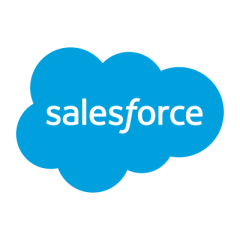


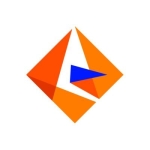
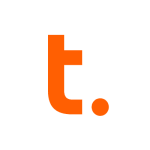



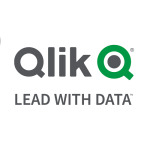


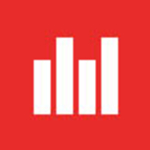
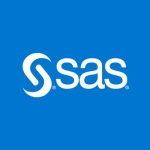



Thanks, Ariel. If Visualman refers to visualization and visual analytics - I would agree with such a statement